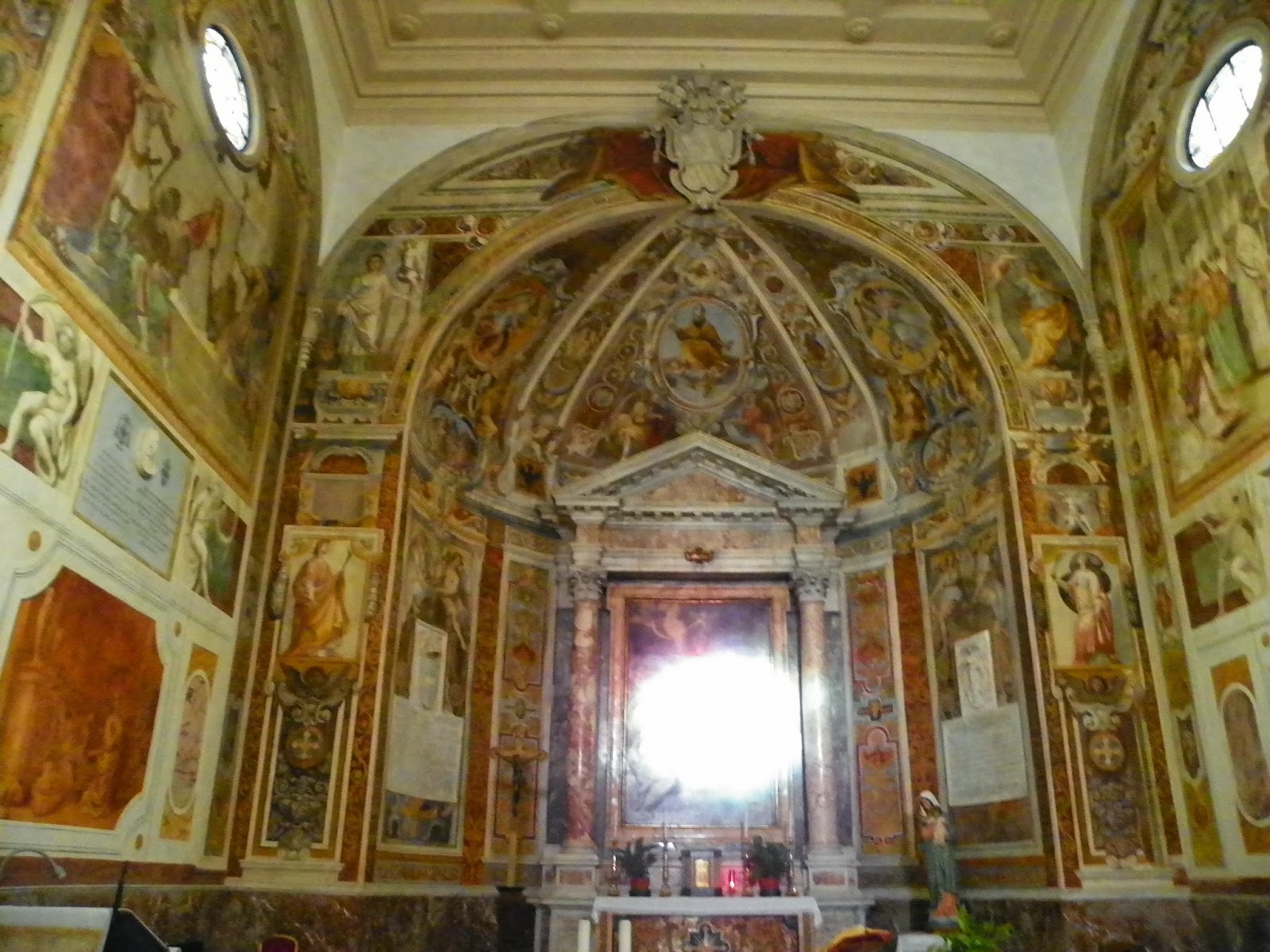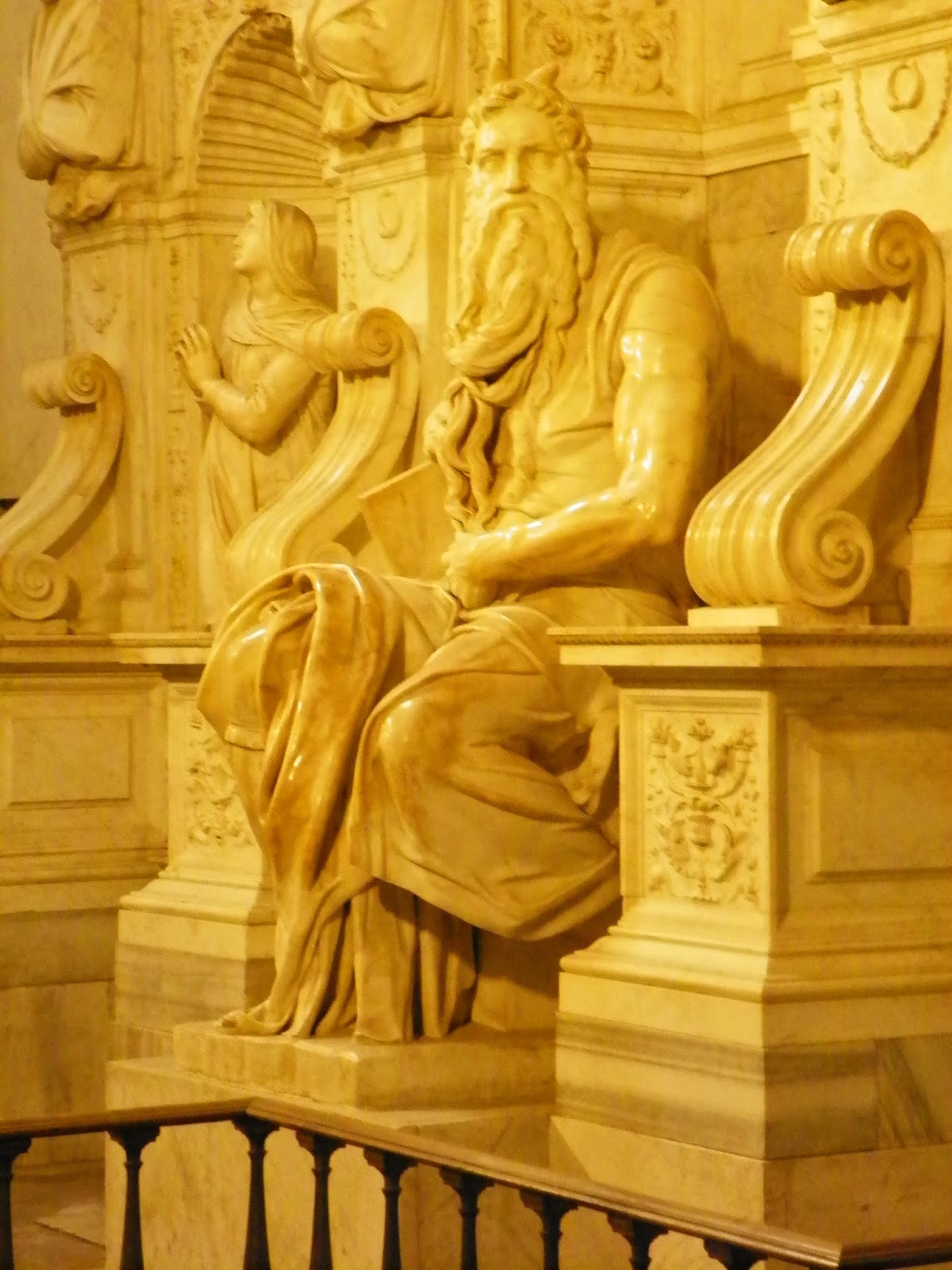 |
| The Colosseum |
 |
| Saint Sabina |
 |
| San Anselmo |
 |
| Crypt Chapel at St. Cæcilia |
 |
| Saint Barbara's Church |
 |
| A Baroque confection of an organ at Saint Mary Magdalene |
 |
| Church of Saint Luis |
 |
| Some inhabitants of the cat sanctuary |
A journal of my travels and thoughts
 |
| The Colosseum |
 |
| Saint Sabina |
 |
| San Anselmo |
 |
| Crypt Chapel at St. Cæcilia |
 |
| Saint Barbara's Church |
 |
| A Baroque confection of an organ at Saint Mary Magdalene |
 |
| Church of Saint Luis |
 |
| Some inhabitants of the cat sanctuary |
 |
| High Altar of the Abbey of Monte Cassino |
 |
| Side chapel at Monte Cassino |
 |
| One of the views from Monte Cassino |
 |
| Another view from Monte Cassino |
 |
| Statue depicting St. Benedict's death |
 |
| Chapel Altar in the Mamartine Prison |
 |
| Basilica of St. Prisca |
 |
| Monastery bell tower |
 |
| View of a part of St. Scholastica's Monastery |
 |
| St. Scholastica in the cloister |
 |
| The sanctuary and choir of the abbey church |
 |
| View from St. Benedict's |
 |
| The Colorado/South Dakota contingent on the Monastery Mount |
 |
| The Basilica of Saint Francis |
 |
| The Chapel of the Passion The Basilica of Saint Francis |
 |
| Street scene in Assisi |
 |
| Saint Clare in the cloister of St. Mary Major |
 |
| Basilica of Saint Clare |
 |
| Saint Mary Major |
 |
| Saint Benedict |
 |
| Saint Scholastica |
 |
| Blue Pasta/Green Pasta |
 |
| San Eutizio |
 |
| Emerging from the "tunnel" |
 |
| Evening sky at Spoleto |
 |
| Courtyard - St. Paul's Outside the Walls |
 |
| Alabaster windows |
 |
| Nave - St. Paul's Outside the Walls |
 |
| Michelangelo's Moses |
 |
| Saint Peter's Chains |
 |
| St. Michael atop Castel Sant'Angelo |
 |
| Tired pilgrims! |
 |
| Rome from the roof of Castel Sant'Angelo |
 |
| Refreshed pilgrims! |
 |
| Beautiful woodcarving in the choir at St. Chrysogonos |
 |
| Ancient sarcophagus in the crypt at St. Chrysogonos |
 |
| Fresco of Benedict healing a leper |
 |
| Chapel where Benedict prayed at St. Chrysogonos |
 |
| Fresco of St. Benedict at St. Benedict's |
 |
| Apsidal mosaic at St. Mary in Trastevere |
 |
| Looking across the sanctuary to part of the organ at St. Mary in Trastevere |
 |
| Beautiful choir at St. Mary in Trastevere |